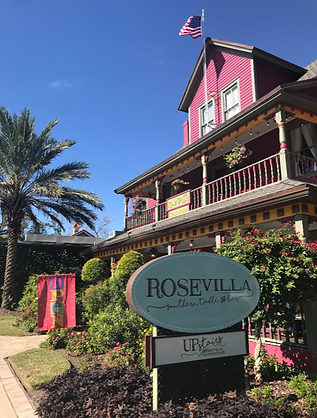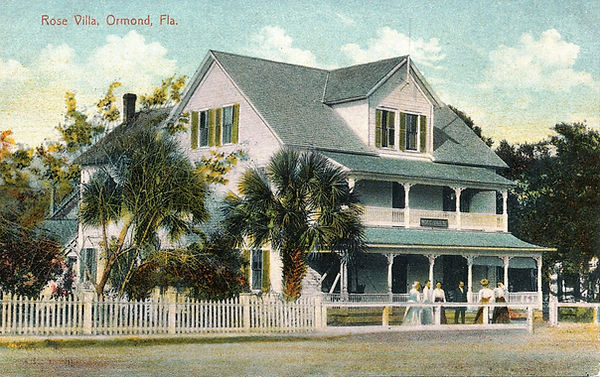The History of Rose Villa
The Rose Villa, established in 1901, began as an elegant bed and breakfast and an exclusive extension of Henry Flagler’s famed Ormond Hotel. Operating until the mid-1950s, it also served as a ticket station for the Flagler Railroad, welcoming distinguished guests who desired more privacy than the grand hotel could offer. Many of these visitors arrived by train, stepping directly into the quiet charm of the Rose Villa. The original inn continues to inspire the spirit and hospitality of today’s restaurant.
Years later, the bed and breakfast was purchased by Roy and Evelyn Ryals and became fondly known as “The Rose.” At that time, it offered 10 guest rooms and seven bathrooms.
In 1978, Frank Hudson and Dennis Buckley acquired the building together, though Hudson later bought Buckley out and became its sole proprietor. Hudson established Hudson Realty, which would grow to be the leading real estate firm in Volusia County for nearly three decades. Renowned for his integrity and fairness, he cultivated a loyal staff—several of his earliest sales associates remained with him throughout those thirty years. In addition to real estate sales, the firm operated a school where hundreds of local residents earned their licenses under Hudson’s guidance. Throughout his ownership, he maintained the building with great care, ensuring its preservation while building a business that left a lasting mark on the community’s history.

West Granada Blvd. Looking West. Rose Villa is on the right.
Notice the railroad tracks in the road. c. early 1900s

As time passed, the Rose Villa began to show its age, but in 2007 it was given new life when Bill Jones purchased the property. For more than a year, a dedicated crew carefully stripped away layer upon layer of paint, uncovering the stunning heart-pine wood hidden beneath. Detailed plans were drawn to restore the interior while adding a new room at the back—designed to house the kitchen of what was soon to become a fine dining restaurant.
Today, the Rose Villa stands as a beautifully preserved example of turn-of-the-century Victorian architecture. Its bold cranberry and apple-green exterior recalls the charm of San Francisco’s celebrated “Painted Ladies.” Inside, painstaking attention to period detail brings the past to life—custom wallpaper patterns extend across the walls and ceilings, lighting fixtures reflect the style of the early 1900s, and bathrooms showcase marble finishes and stained glass. A mahogany bar and a kitchen finished entirely in subway tile complete the restoration. Together, these elements create an authentic glimpse into an era defined by elegance, craftsmanship, and refinement.

Rose Villa Postcard
Date Unknown



